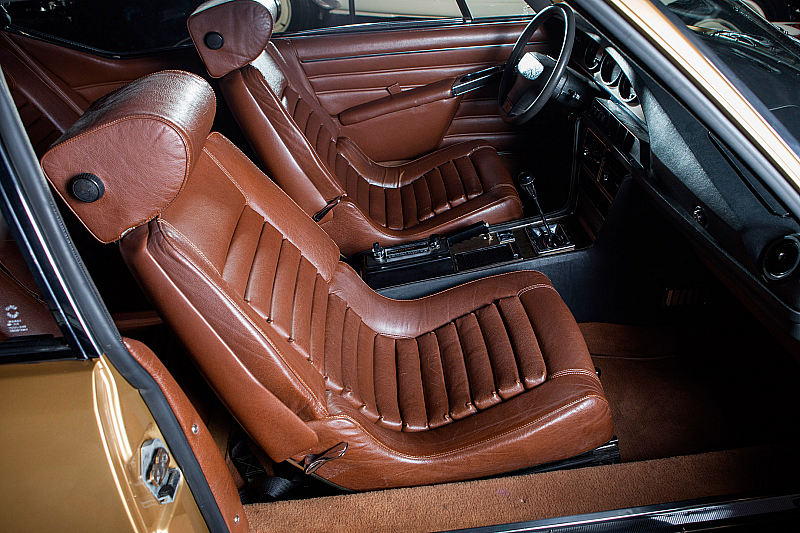Istorie
Citroen purchased Maserati in 1968 with the intention of harnessing Maserati's high-performance engine technology to produce a true Gran Turismo car, combining the sophisticated Citroen suspension with a Maserati V6. In 1970, it was a car of the future and the fastest front-wheel-drive car.
Full description
In 1961, Citroen began work on 'Project S' — a sports variant of the revolutionary Citroen DS. As was customary for the firm, many running concept vehicles were developed, increasingly complex and upmarket from the DS. Citroen purchased Maserati in 1968 with the intention of harnessing Maserati's high-performance engine technology to produce a true Gran Turismo car, combining the sophisticated Citroen suspension with a Maserati V6.
The origin of the model name 'SM' is not clear. The 'S' may derive from the Project 'S' designation, the aim of which was to produce what is essentially a sports variant of the Citroen DS, and the 'M' perhaps refers to Maserati, hence SM is often assumed to stand for 'Sport Maserati'. But others have suggested it is short for 'Sa Majeste' (Her Majesty in French), which aligns with the common DS model's nickname 'La deesse' (The Goddess).
Contemporary automotive journalists were most effusive about the SM's dynamic qualities, which were unlike anything they had experienced before. The SM provided a combination of comfort, sharp handling, and high performance not available in any other car at the time. The magazine Popular Science noted that the SM had the shortest stopping distance of any car they had tested.
The SM was unusually aerodynamic for its era. The ventilation intake is located in a "neutral" area on the hood, which makes the ventilator fan regulate the interior ventilation at all road speeds. European critics marveled at the resulting ability to travel for hours at 200 km/h in comfort and with impressive fuel economy on the large 90 l fuel tank.
The SM combines many unusual and innovative features including hydro-pneumatic self-leveling suspension, self-leveling lights that swiveled with the steering, self-centering and fully powered, variable steering, wiper mechanism that is 'sensitive' to rain, disk brakes at all four corners with the front brakes being inboard, self-adjusting according to the weight in the rear of the car.
In 1970, it was a car of the future and the fastest front-wheel-drive car, with a factory-quoted top speed of 220 km/h, and independent tests achieving as much as 235 km/h. The SM won its first competitive outing, the grueling 1971 Rallye du Maroc.
SM World, a marque specialist in Los Angeles, produced a turbocharged SM, which set the land speed record for production vehicles in its class in 1987 at the Bonneville Salt Flats — traveling at 325 km/h.
This car has covered 26,738 km.





